Logistics
Industries
Technology & Innovations
E-commerce
E-commerce Fulfillment Services
Lease & Maintenance
Semi Trucks
Logistics
E-commerce
Lease & Maintenance
Buy Used Trucks

[Updated post from July 27, 2021]
It was Napoleon who once said that ‘If you want a thing done well, do it yourself’. He could easily have been talking about customer self-service in e-commerce.
Consumer expectations for stellar customer service have never been higher. According to Microsoft, 90% of U.S. consumers see customer service as a deciding factor in whether they do business with a company, while 58% will switch companies due to poor customer service.
The message from consumers is clear: Deliver a seamless customer experience – or else.
When shoppers can shop 24/7 across multiple time zones, there’s no logic in relying on customer service representatives who are only online from 9 am-5 pm each day. This is why customer self-service is critical to the overall health of your business and ensuring high levels of customer satisfaction.
In this post, we’re going to explore how your brand can empower customers with self-service capabilities that enhance their experience with your brand.
Imagine if instead of calling your hairdresser to book an appointment, you could simply log into a web portal and do it yourself. Your account also keeps a record of your previous visits so you can pick the same services and even set up recurring appointments.
This is a great example of how customer self-service strategies empower customers to take charge of their customer experience.
Customer self-service, where customers can answer questions, troubleshoot issues, and complete their shopping journey without the assistance of customer service teams, is now an expectation on behalf of many consumers. In fact, 70% of customers expect a company’s website to include some form of a self-service portal.
By investing in self-service tools such as chatbots, knowledge base articles, and real-time order tracking capabilities, your customers can pursue their own solutions to resolve issues - without needing to loop in customer service reps as the first port of call.
With today’s consumers demanding ever-higher standards of customer support, self-service might seem counterproductive. After all, why should a brand outsource essential parts of customer support to customers themselves?
Yet there are several compelling reasons why this approach is paying dividends to merchants:
Yes, you read that right. According to Bizreport, 73% of consumers want the ability to solve product or service issues on their own, while 65% say they feel good about themselves - and the brand they're shopping with - when they’re able to solve problems without the assistance of support agents.
We’ve all had the experience of feeling like online shopping would be more seamless if we could manage it for ourselves. Whether it’s being unable to initiate an exchange or access a knowledge base, poor customer experiences usually stem from customers being reliant on a support agent to get their questions answered and advance their shopping journey.
In sum, self-service support is the key to offering customer-centered brand experiences. Giving your customers the agency to choose how they solve problems, rather than funneling them into an endless support queue, creates more positive shopping interactions and builds customer loyalty.
Customer support is easily one of the most important services in ecommerce - and also the most under-optimized for efficiency.
The self-service channel of many merchants is designed to send customers directly to a live agent via phone calls or live chat - even though the majority of customer queries don’t require a dedicated service request.
According to self-service vendor Smart Tribune, around 70% of the service queries that brands receive can be answered via customer self-service tools like FAQs or chatbots. Without an array of self-service tools at your customer's disposal, that’s a lot of unnecessary traffic being directed at your customer support team.
For example, if a large-scale weather event affects delivery to a specific region, your brand is likely to receive an avalanche of questions about delivery delays. Rather than having your support team answer hundreds of identical queries, it makes far more sense for customers to be able to find answers via your FAQs or a mass email communication.
But without a good self-service strategy, customer support reps get bogged down with unnecessary inquiries and have less time to dedicate to more complex issues. This lengthens the time it takes to resolve cases, which in turn lowers customer satisfaction. When 46% of consumers expect companies to respond to their queries faster than four hours, a lack of self-service options can result in a poor customer experience.
By embracing a self-service philosophy, you can free up valuable time for both the customer and your support representatives.
Let’s compare two different customer service scenarios:
Journey 1: The customer is unable to find a comprehensive sizing guide on your website. They send an email query but learn via an automated reply that responses take at least two working days. In the meantime, the customer is unable to move forward in their shopping journey and ends up buying from a competing brand.
Journey 2: The customer finds an on-site sizing calculator where they can input their measurements and receive a direct answer about their clothing size. They also have access to a library of customer reviews on the product page to find out more about the garment’s fit and an in-depth FAQ on how to maintain its shape and condition. Feeling confident with this information, they decide to purchase.
In the first journey, the customer has no self-service tools available to assist them in navigating the shopping journey, resulting in website churn. But in the second, every self-service interaction is helping to bring them closer to a conversion. In sum, the more information your customers have access to, the more opportunities there are for increased sales.
Whenever your customer uses a self-service tool, no matter whether it's a chatbot, order tracking link, or knowledge base article, you’re getting in-depth insights into customer behavior.
Identifying what resources and support your customers require at each stage of the shopping journey helps you to nurture more shoppers towards purchasing. For example, if there’s a trend in customers starting the checkout process after learning about your generous returns policy in the FAQ section, this is a good indication that you should consider promoting your returns policy elsewhere on your website.
It’s hardly surprising that ecommerce has shaped consumer preferences for more agency. After all, online shopping is the ideal customer self-service tool.
There’s no more waiting for sales assistants to find the right item when you can add it directly to your shopping cart with a single click. Checkout lines disappear completely when customers can enter their own credit card details in a self-service portal at a time that suits them.
In sum, ecommerce has eliminated many of the pain points we experience when shopping in-store – all because we get to practice self-service on a new level.
Despite this, 55% of consumers report finding customer self-service portals difficult to use. As it turns out, there's a fine line between equipping your customers with the tools to help themselves and abandoning them to inefficient, lengthy processes better solved by human touch.
So, what is the difference between 'good' and 'bad' customer self-service?
So, how can brands make sure that they're investing in the customer self-service strategy?
FAQs (Frequently Asked Questions) are usually the first port of call for shoppers who have a query, so there’s a lot is riding on this self-service tool.
When FAQs are answered well, they build trust in your brand and guide consumers to additional touchpoints in the shopping journey. But if not, they can end up causing confusion and creating more questions than they answer.
That’s why it’s important to make that your FAQs are:
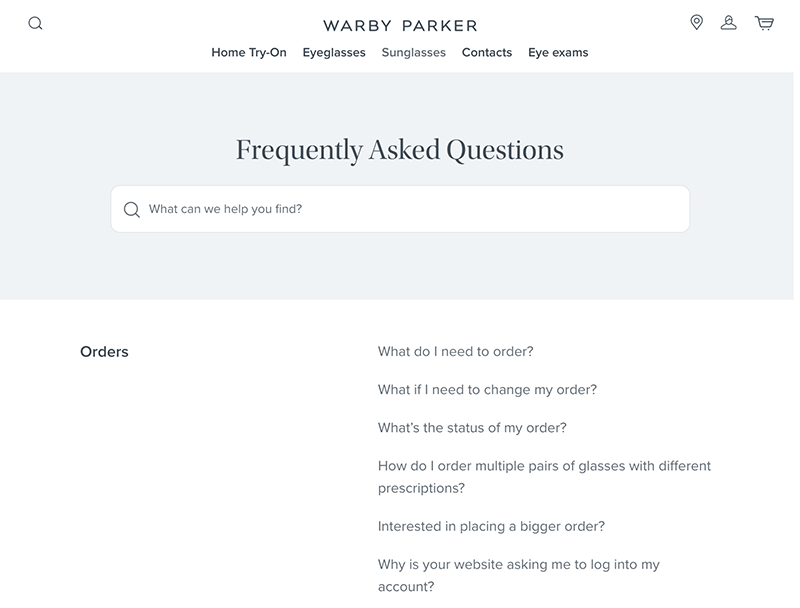
A common mistake that FAQ pages make is focusing on questions that a business thinks are popular, rather than staying in the loop with what their customers are really asking. Running regular customer surveys and monitoring comments on social media posts are good ways to get an inside view of what your customers want to know about.
For more about creating a great FAQ page, check out our full guide.
Chatbots are a great self-service solution to the challenge of being unable to staff your live chat 24/7. Chatbots can be set up to answer relatively straightforward and common queries, such as what countries your business ships to and how long your return window is, enabling customers to get instantaneous responses while shopping. Chatbots are gaining increasing popularity as consumers prioritize speed in their customer service interactions. 56% of consumers say that they prefer to use chatbots or Facebook Messenger than call customer service support, while 47% are open to using chatbots to purchase items.
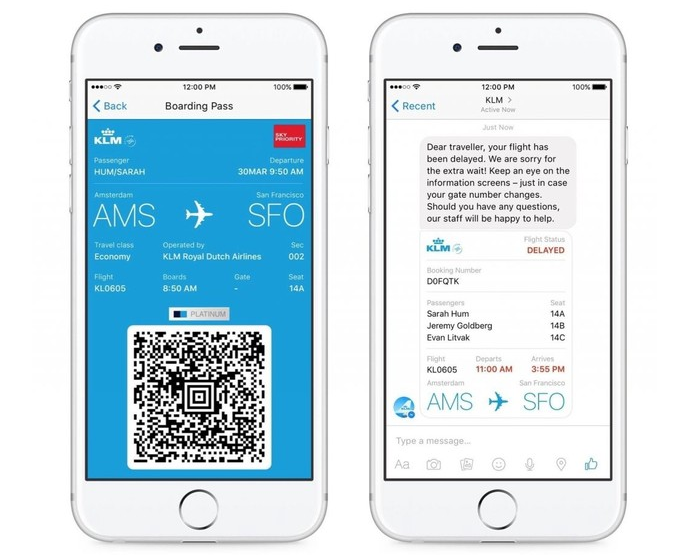
While chatbots can offer customers a great self-service experience, it does take a bit of work to get a chatbot to the point of being able to answer more complex requests or personalize interactions with customers. Most chatbots operate using machine learning algorithms that allow them to improve their responses over time, meaning there can be a teething period when they’re first introduced.
In sum, web self-service tools like chatbots help to free up more time for businesses to help customers with much more complex requests, while speeding up response times for basic information.
Having access to up-to-date stock levels isn’t just important for good inventory management, but for driving customers to make a purchase. Displaying real-time inventory levels on your product pages eliminates endless requests relating to SKU availability, making it a valuable self-service offering that increases sales.As BOPIS and curbside pick-up grow more popular, consumers are not going to commit unless there’s a guarantee of their chosen items being available in their chosen store. Despite this, less than half of retailers offer inventory visibility on product pages.

It’s notable that nearly half of consumers still prefer to shop in-store despite the pandemic, with the immediacy of products cited as one of the key reasons. Nobody wants to receive a substitute item that isn’t what they asked for, or have their order canceled and refunded because an item sold out. Without real-time inventory information, your customers can’t make an informed decision about an online purchase, which increases the likelihood of them avoiding your store.
Consider using an Order Management System like Ryder that integrates seamlessly with your ecommerce platform. This ensures that your inventory counts are updated in real-time wherever a customer places an order or makes a return.
Hassle-free returns play a major role in whether consumers choose to purchase from an ecommerce brand. 51% of consumers say they won’t shop with an ecommerce merchant that doesn’t offer free and easy returns. This has only become more important during the pandemic, with 44% of consumers exhibiting more cautious shopping behavior to avoid having to return items.
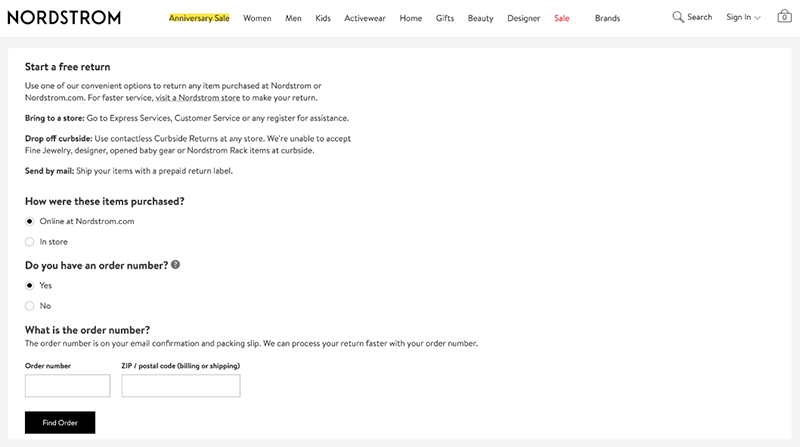
Customers being unable to initiate returns themselves adds a huge amount of friction to the post-purchase experience. Being dependent on anonymous support agents to handle returns requests leaves consumers feeling powerless, which in turn can create negative feelings towards a brand. By offering a seamless, self-service returns workflow that’s under your customer’s control, you can inspire consumer confidence and boost sales.
A customer self-service portal for returns, such as those offered by Happy Returns or Loop Returns, enables customers to kickstart their return or exchange and even choose from one-click replacement products - all within the same workflow.
Merchants using Ryder can embed a branded returns link within the initial order confirmation email, allowing customers to start the returns process without contacting a representative first. This self-service approach massively streamlines your returns workflow and allows you to process returns much more efficiently.
The ability to track online orders has become an expectation for many consumers. 82% of consumers say it’s important for retailers to update them during every stage of the fulfillment and delivery process. This puts a lot of pressure on your customer service rep - unless you implement a self-service solution.
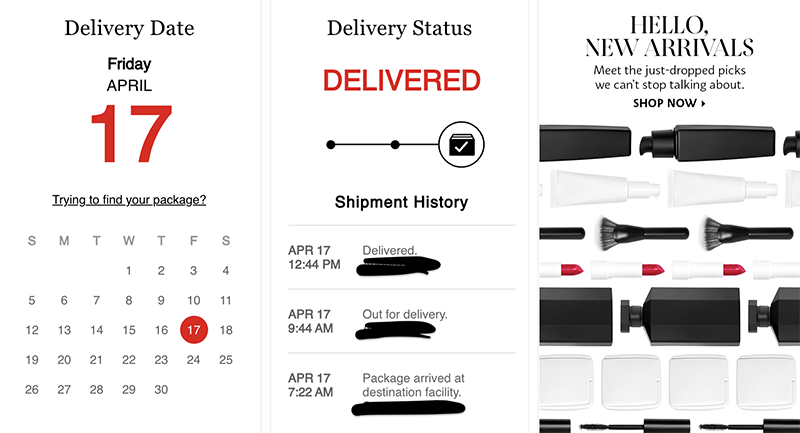
Implementing a self-service order tracking portal eliminates the need for your customers to continually ask for updates. Giving consumers the ability to check their orders whenever they want also helps to remove one of the biggest causes of delivery anxiety – a lack of transparency over the fulfillment process.
We don’t often think of click and collect strategies as self-service offerings. Yet they’ve become a popular way for consumers to avoid common pain points in the in-store shopping experience. Hunting for items across endless aisles or navigating crowded store spaces have become experiences to avoid, especially in the pandemic era. BOPIS and curbside pick-up enable consumers to get the best of both worlds; the self-service nature of online shopping and the ease of returning products in-store if necessary. But for this to work effectively, retailers need to invest in making BOPIS a smooth experience.
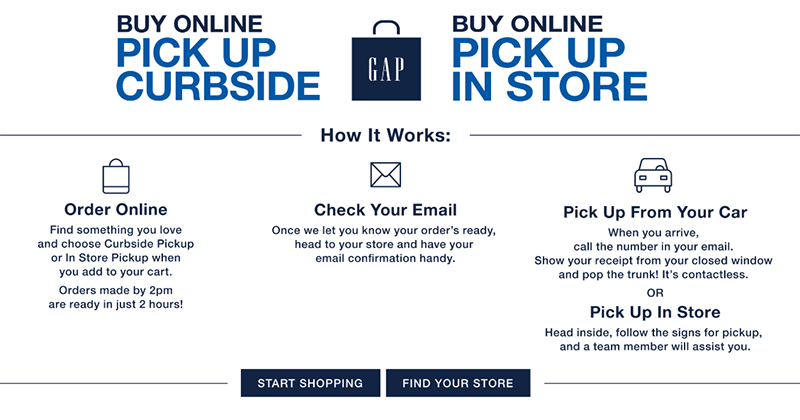
Small additions, such as allowing customers to ‘check in’ via an app or email link to confirm their arrival, means that staff can have an order ready to go rather than making customers wait for retrieval. You can find more top tips in our curbside pick-up guide.
A knowledge base has some overlaps with FAQs, but offers customers a much more intuitive self-service solution by bringing all of your online support resources to the same place via on-site search engines.
From webinars and how-to videos to blogs and ebooks, knowledge bases offer customers a variety of self-service options via informative and relevant content. They're also a fantastic resource for customer service reps who are supporting service requests by giving them a consistent series of resources to direct shoppers towards, rather than having to manually create responses from scratch and risk errors.
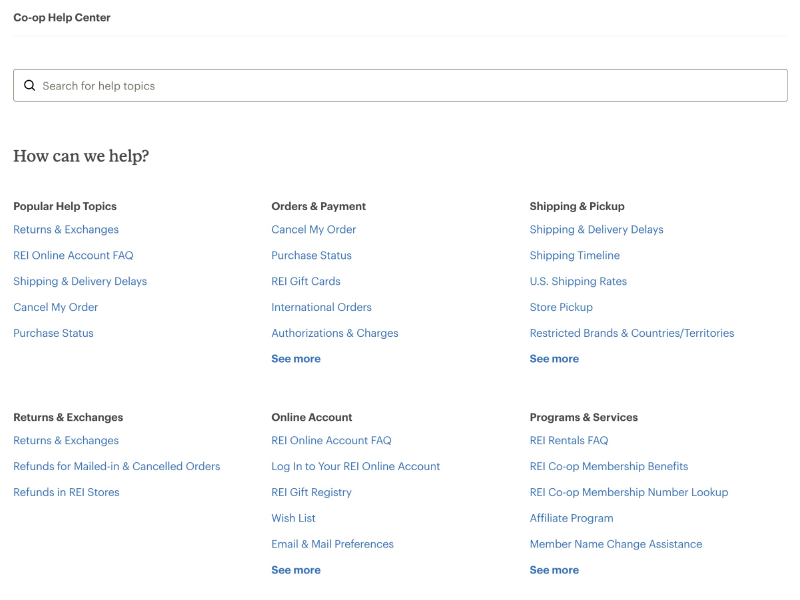
The biggest challenge of running a knowledge base is ensuring that your articles are regularly updated and that you have a large volume of new content being added to keep pace with customer queries.
The most important part of your customer self-service strategy is recognizing its limits. No matter how comprehensive your self-service strategy might be, there are still going to be scenarios that your customer cannot solve with how-to videos or service portals. This is why you need to provide shoppers with a variety of escalation options so they know how to contact a live agent if needed.
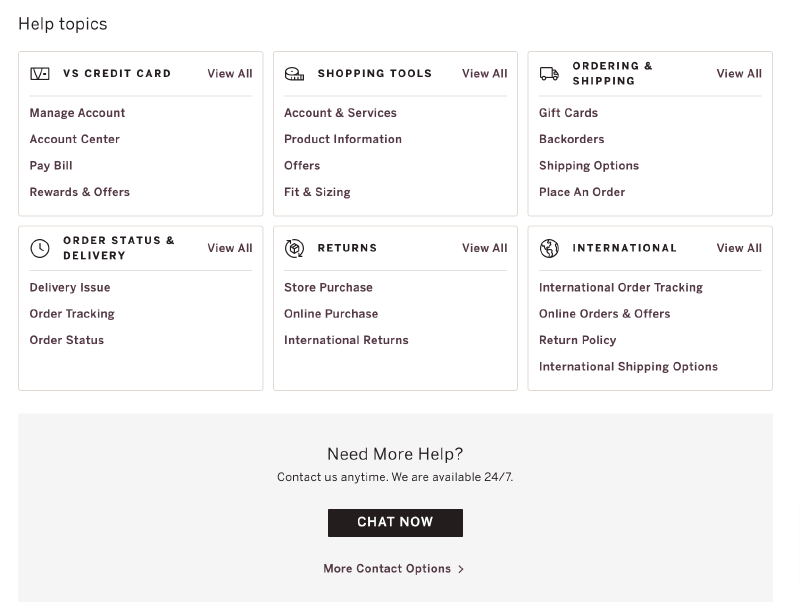
Adopting a customer self-service mindset at your ecommerce store requires a shift in how you think about customer support. Even small steps - like optimizing your FAQs and refining your return workflow - take a huge amount of pressure off your customer service team, as well as create happier customers who are more engaged in your brand. While building out FAQs or a knowledge center isn't going to happen overnight, investing in these efforts now will enable your brand to offer faster, more effective service in the years to come.